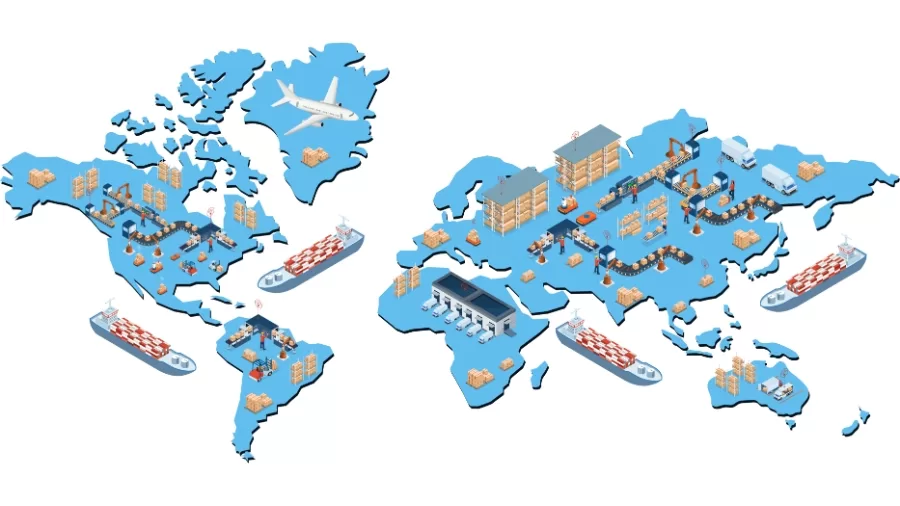Business
How to Streamline International Shipping for Business Growth

- In international shipping, businesses have to bear these costs and understand the process of getting involved in internal regulation for foreign commercial enlargements.
- An efficient shipping strategy, transparency in understanding terms and conditions applicable locally, and awareness of sophisticated pricing will enable smooth crossing of global shipping hurdles and result in profits.
Go global, they say. Expand your online retail and go international today. A surefire way to grow your business is by expanding it overseas. However, it is easier said than done; international shipping is one of the biggest challenges that upcoming online entrepreneurs usually face. This is the most important protective measure for a good shipping strategy, from understanding the costs to guaranteeing a smooth delivery of the product. If you want to ship internationally, here are the things you still need to know.
What Is International Shipping?
It is moving goods between countries or international borders that brings online shoppers closer to consumers beyond boundaries. Even though it is much more similar to domestic shipping, international shipping is way off from the way domestic shipping is done, as it is profoundly concerned with how expensive it is to ship, documentation issues, and logistics.
International shipping is pricier as compared to local shipping owing to longer distances, the necessitation of several modes of transport (air, sea, ground), which are often wider and more chaotic, and the imposition of import taxes or duties. In addition, customers have customs demands, unlike local shipping. Internal shipping usually takes a lot of time to reach every customer.
The Importance of International Shipping
The enormous possibilities in global eCommerce still loom large. As noted by Oberlo, global retail e-commerce sales for the year 2023 amounted to a great $5.8 trillion, with 2.71 billion online shoppers across the world. One significant opportunity presented by global sales is the fact that the average international order value amounted to $121 and $112 as domestic sales, according to Statista.
By doing so, your e-commerce store can be satisfied with a larger pool of customers and an expanded audience. Very many customers look at cross-border shipping as a given from today’s operation areas, which can make a lot of difference in market positioning your business.
Forming an Efficient International Shipping Strategy
Developing a strong shipping strategy is essential to ensuring that your business works. Here’s how you start:
1. Determine Shipping Destinations
Begin by deciding where you ship and what kind of products you want to deliver. Here are some strategies you can use to choose your first international markets:
- Stay Local: For example, if your business is located in the UK, you might start by shipping to neighbouring European countries. This way, you would consider reduced complexity in shipping since you start small.
- Check the Website Traffic: Find out which countries have the most traffic to your online store. Very high traffic from a particular region may indicate demand.
- Language and Fit with Market: If you know multiple languages, perhaps you can think about diving into regions where these languages are spoken. Also, make sure your products fit the needs of the local market. That success in one country can be a failure in another.
2. Make Appropriate Choices Regarding How Best to Transport the Product.
Not every item is as easy to transport to a different country as some other materials. Generally, smaller and less weighty products become the least expensive to ship. This is because an international shipping unit is defined by small, lightweight, and durable characteristics. More breakable items may be more in danger during shipment and require the right packaging.
3. Be Educated About Worldwide Trade Regulations.
Each country has rules that are specific to itself for imports and exports, and failure to follow these rules by entering a foreign country can lead to delays in delivery or huge penalties. It is mandatory to determine the type of supplies that are allowed to be sent to the desired country. For example, the allowed list may not include any artwork or food products.
Check with tools like the Shipping Regulations Tool of UPS to determine what the unique country rules and regulations might be. When in doubt, contact the import office of the country to which the email will be sent.
Be Transparent About the Shipping Fees
For potential customers, international shipping may present a difficult problem; obscure fees result in cart abandonment. Some 50% of cart abandonment, as per The Baymard Institute, stems from unexpected shipping costs. Hence, to build trust and increase conversion, make it easier to deal with costs.
Make it a point to explain in a very clear manner your shipping policy on your website and detailed shipping costs throughout the transaction discretion. Use tools such as shipping & promo bars to do a good job of showing the availability and cost of international shipping.
Calculation of International Shipping Costs
The accurate calculation provides a critical foundation for ensuring that prices are winning without losing out on profit margins. Here are five elements to consider:
- Packaging: The right packaging protects and equips the delivered product. Select packaging of good quality but available at a much lesser price. Normally, packaging should cost between £1 and £5 per piece, depending on size and quality.
- Freight Costs: Calculate the costs of transporting different scaled items to any destination. Numerous services go ahead with offering just about the same facility; for example, Royal Mail and FedEx provide rated calculators.
- Handling: Extra purchases of stuff often double as extra transaction fees. Special handling costs must be examined concerning preparation time and labour needed to prepare an order for shipping.
- Duties and Taxes: International shipments also lead to possible taxes and duties. One should determine the final pricing for duties and taxes—country of destination charges—as they are to be passed onto the customer at the delivery place, i.e., DDP (Delivered Duty Paid) or DDU (Delivered Duty Unpaid) basis.
- Gross Profit Margin: Don’t forget about your bottom line when calculating the cost of shipping to international destinations. Internationally priced items should not repel clients because the costs are too high unless, of course, they bring huge profit margins.
Pricing Models for Shipping
Take, for example, the three primary pricing structures for international shipping:
- Free: The profit margins need to be able to absorb free international shipping. Try benefiting from this enhancement in customer satisfaction for additional sales and benefit from setting up a free shipping minimum order threshold.
- Carrier Rate: The exact and real-time charge on weight, size, and place to arrive falls due to shipping magnitude.
- Flat: The situation simplifies as the same flat rate is charged despite any shipping destination. Best used for the same-sized and -weighted products.
Shipping Documentation: It’s Not as Complicated as One Might Think
Most international cargo will be associated with a business invoice, with some product description and value, and even payment aspects that are necessarily vital for customs clearance and tax appraisement.
Original documents have to be organised or straightened and kept in order before dispatching, or else there are chances for shipment delays. If you are in doubt, seek the advice of an expert or the cargo-carrying company for the preparations.
Conclusion: Expand with Confidence
International shipping is one of the critical elements in the growth of e-commerce. By creating clear strategies, transparent pricing, and an understanding of global logistics, the basics of international sales are clear so you can run smoothly abroad. Thus, with the right knowledge and tools, you will be ready to ride on, shake hands with, and take your commerce to a newer global height.

















































